Men's belts in the 1940s underwent a transformation driven by wartime needs and evolving fashion trends. With leather shortages, fabric belts emerged, often featuring covered buckles and wider widths of 1.5 to 3 inches. Military-style buckles became popular for their practicality, while personalization with stamped initials added a unique touch. Styles ranged from minimalist thin leather belts to bold, vibrant fabric designs. Belts not only served functional purposes but also reflected the era's elegance in tailoring and coordination. By exploring this period, you'll uncover even more intriguing details about the impact of 1940s fashion on contemporary styles.
Overview of 1940s Men's Belts
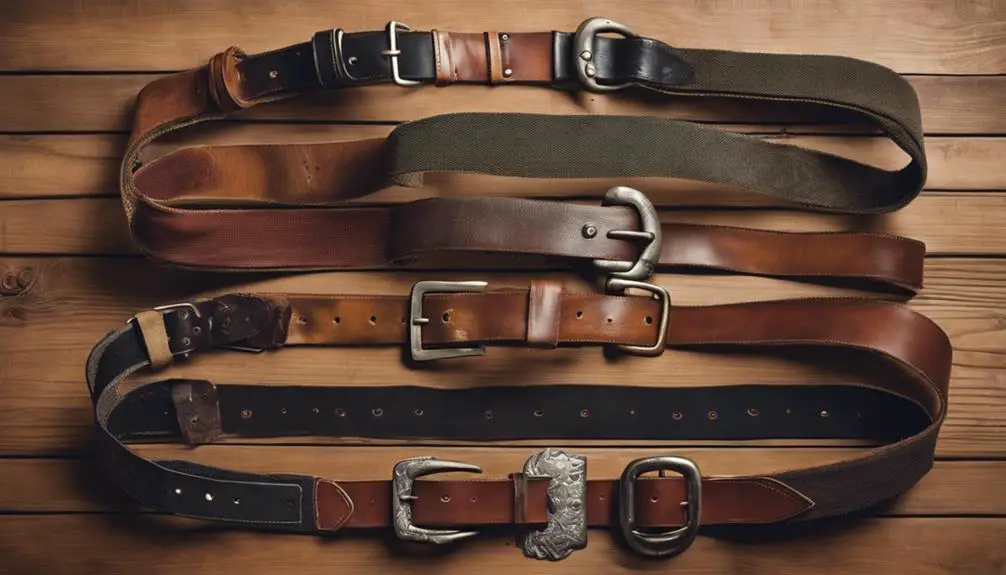
In the 1940s, men's belts underwent a notable transformation influenced by both practicality and wartime aesthetics. During the war years, leather shortages prompted designers to innovate, leading to the emergence of fabric belts with covered buckles. These belts were often crafted to match the fabric of suits and trousers, allowing for a cohesive look amid resource constraints. This period also saw the rise of unique vintage clothing labels that reflected the era's design ethos, showcasing craftsmanship and innovation.
By the late 1940s, you'd notice a shift towards wider belts, expanding to widths of 3 inches. This change not only catered to fashion trends but also reflected a growing preference for bold colors and patterns, including vibrant polka dots and other striking designs. Military-style belt buckles gained popularity during this time, often personalized with stamped initials, symbolizing a connection to the era's history and a sense of individuality.
Matching belts with suspenders and ties became a fashionable statement, showcasing colors like maroon, brown, and blue. As you explore vintage-inspired clothing online today, you'll see echoes of these 1940s trends, illustrating how the era's designs continue to influence modern styles. The evolution of men's belts during this decade encapsulates a blend of functionality and style that remains relevant today.
Popular Styles and Materials
The 1940s marked a pivotal era for men's belts, showcasing a fascinating blend of style and resourcefulness amid wartime constraints. During this decade, you'd often see thin leather belts, typically adorned with small oval metal buckles, creating a minimalist aesthetic that resonated with the time's sensibilities. However, leather shortages led to the rise of fabric-covered belts in 1942, featuring matching fabric-covered buckles and broader widths of 1.5 to 2 inches, catering to both necessity and style.
As the decade progressed, the designs evolved, incorporating bolder colors and patterns that made a statement. By the late 1940s, belt widths expanded to 3 inches, and styles began to embrace rectangular and western shapes, reflecting a newfound creativity. Military-style buckles also gained traction, often personalized with stamped initials, merging functionality with a touch of individuality.
While leather remained the primary material, some sought luxury and durability through high-end options like alligator and crocodile skin. This combination of practicality and luxury defined the era, making men's belts not just accessories but essential elements of style.
Military Influence on Belt Design
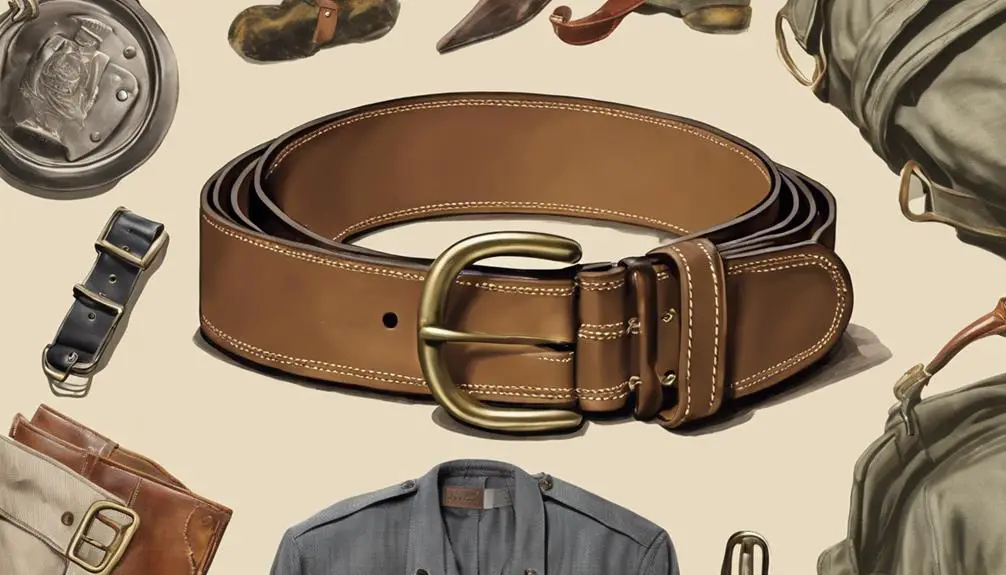
While World War II shaped many aspects of daily life, its influence on men's belt design is particularly significant. The military-style buckles that emerged during this era reflected the practicality and functionality of wartime gear. You'll notice that these buckles often featured personalized stamped initials, adding a touch of individuality to a utilitarian aesthetic. The sturdy leather belts and durable materials used in military uniforms inspired civilian belt designs, making them more robust and practical.
As military personnel required accessories that could withstand the rigors of daily life, the trend for wider belts—averaging 1.5 to 2 inches—gained traction. This width not only reinforced the functionality of the belts but also contributed to the overall silhouette of 1940s fashion, accommodating a wide waist and ensuring a secure fit. The aesthetic of military belts, characterized by their simple yet effective designs, marked a significant shift towards utilitarian fashion. In adopting these elements, civilian styles began to embrace what was necessary for both form and function, resulting in belt designs that were as practical as they were stylish, a true reflection of the times.
Fashion Trends in Belt Buckles
As the influence of military design waned towards the end of the 1940s, men's belt buckles began to evolve, reflecting a shift in fashion sensibilities. Initially, belt buckles featured simple, practical designs, largely due to wartime material shortages. Military-style buckles gained traction, often personalized with stamped initials. However, as the decade progressed, a move towards a more vintage aesthetic emerged.
Thin oval metal buckles, frequently covered in leather, epitomized the minimalist look of the era. By the late 1940s, decorative buckles began to appear, showcasing bolder designs and colors that complemented the wider leather belts introduced during this period. This shift marked a significant transformation in belt fashion history.
The trend of matching belt buckles with other accessories, such as ties and suspenders, emphasized the coordinated look that became increasingly popular. Unique thematic buckles, featuring Western motifs or sporting designs, also gained favor, reflecting the growing influence of Hollywood and Western culture on men's fashion. This period of experimentation and personalization in belt buckles not only highlighted individuality but also paved the way for future trends in men's accessories.
Suspenders Vs. Belts: a Comparison
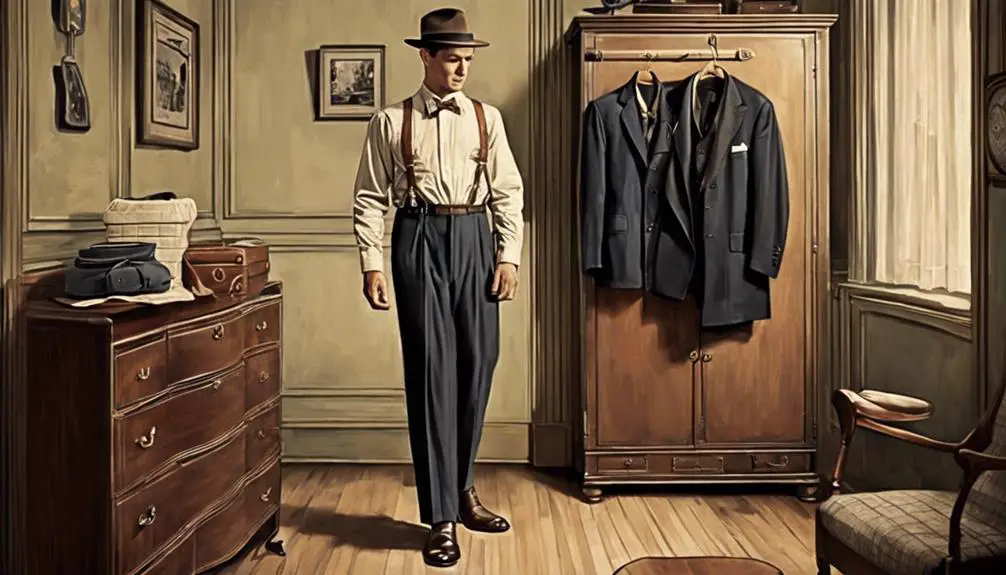
Suspenders and belts serve as essential accessories in men's fashion, each offering unique advantages and styles that cater to varying preferences and occasions. In the 1940s, belts surged in popularity, evolving from thin designs to thicker styles ranging from 1.5 to 3 inches wide. Their versatility allowed them to shift seamlessly across various fashion contexts, from casual outings to formal events.
On the other hand, suspenders, typically 3/4 to 1-1/3 inches wide, were mainly reserved for formal wear. While they featured bold patterns and colors, their appeal waned as belts became the preferred choice for everyday attire. By late in the decade, coordinated sets of belts and suspenders, once fashionable, began to diminish in favor of the practicality of belts.
Belts, often adorned with small oval metal buckles or trendy military-style options personalized with initials, became synonymous with practicality and style. In contrasting styles, suspenders maintained their role in more formal contexts but lacked the versatility that belts offered. Ultimately, the 1940s marked a pivotal shift in men's fashion, favoring belts as the dominant accessory for both style and function.
Notable Brands and Designers
Emerging from the constraints of wartime production, notable brands and designers in the 1940s men's belt market adapted to changing materials and consumer preferences. They focused on craftsmanship, producing belts that not only served a functional purpose but also made a fashion statement. Many brands specialized in leather goods, creating belts with military-style buckles that became a trend during this period.
As leather shortages arose due to World War II, innovative designers turned to synthetic materials, leading to unique fabric-covered styles that appealed to a broader audience. The typical widths of belts ranged from 1.5 to 2 inches, showcasing tailored designs that complemented various outfits.
Key features of 1940s men's belts included:
- Military-style buckles that added a rugged charm
- Personalized elements like stamped initials for individual expression
- Vibrant colors that began to emerge post-war
- Bold patterns reflecting the era's evolving fashion
- A shift towards comfortable yet stylish designs
This era marked a significant evolution in men's vintage accessories, as brands embraced creativity and adaptability to meet the desires of a changing consumer landscape.
How to Wear 1940s Belts
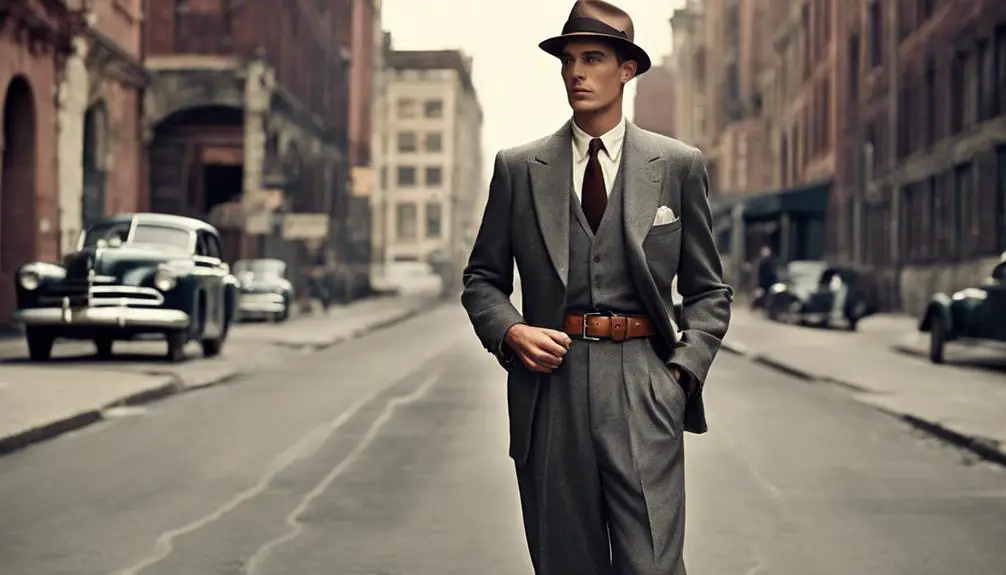
Wearing 1940s belts effectively requires an understanding of both their functional and stylistic roles in men's fashion. To capture the essence of this era, you should wear belts at your natural waist, typically choosing widths between 1.5 to 2 inches for standard styles, or up to 3 inches for more vibrant post-war designs. Pairing wide belts with tailored jackets or suits enhances your silhouette while maintaining a polished appearance.
Consider opting for plain or simple belt designs in popular colors like maroon, brown, or blue, which beautifully complement suspenders and ties. The trend of matching fabric belts with fabric-covered buckles emerged during leather shortages, allowing for coordination with your outfits and contrasting details like buttons and collars.
Additionally, military-style buckles provide a rugged touch, while personalizing belts with stamped initials adds a unique flair to your ensemble. This thoughtful approach to incorporating 1940s belts not only elevates your look but also pays homage to a distinct fashion era known for its elegance and style. Embrace these elements to create an authentic 1940s-inspired outfit.
Frequently Asked Questions
Did Men Wear Belts in the 1940s?
Yes, men did wear belts in the 1940s. They evolved considerably in style and material due to wartime shortages, with designs ranging from leather to fabric, reflecting the era's changing fashion trends and practicality.
When Did Men Start Wearing Belts?
Men started wearing belts in the early 20th century, primarily for practicality. As fashion evolved, belts became essential accessories, offering both functionality and style, gaining increasing popularity throughout the 1930s and into the 1940s.
What Did Men Wear in the 1940s?
In the 1940s, you'd typically wear tailored suits, often complemented by wide lapels and high-waisted trousers. Fabrics were sturdy, reflecting wartime shortages, while colors ranged from muted tones to bolder patterns, showcasing individual style.
What Accessories for Men Played an Important Part of Fashion in the 1940s?
In the 1940s, you'd notice accessories like cufflinks, watches, and scarves defining men's fashion. Cufflinks showcased geometric designs, while watches featured sleek styles. Scarves alternated between practical and stylish, reflecting the era's evolving trends.
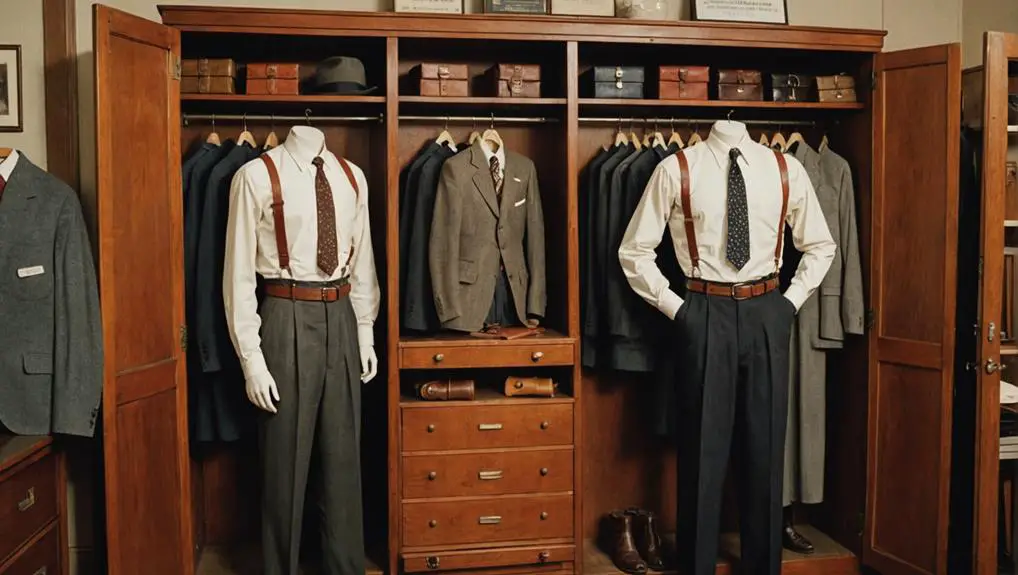

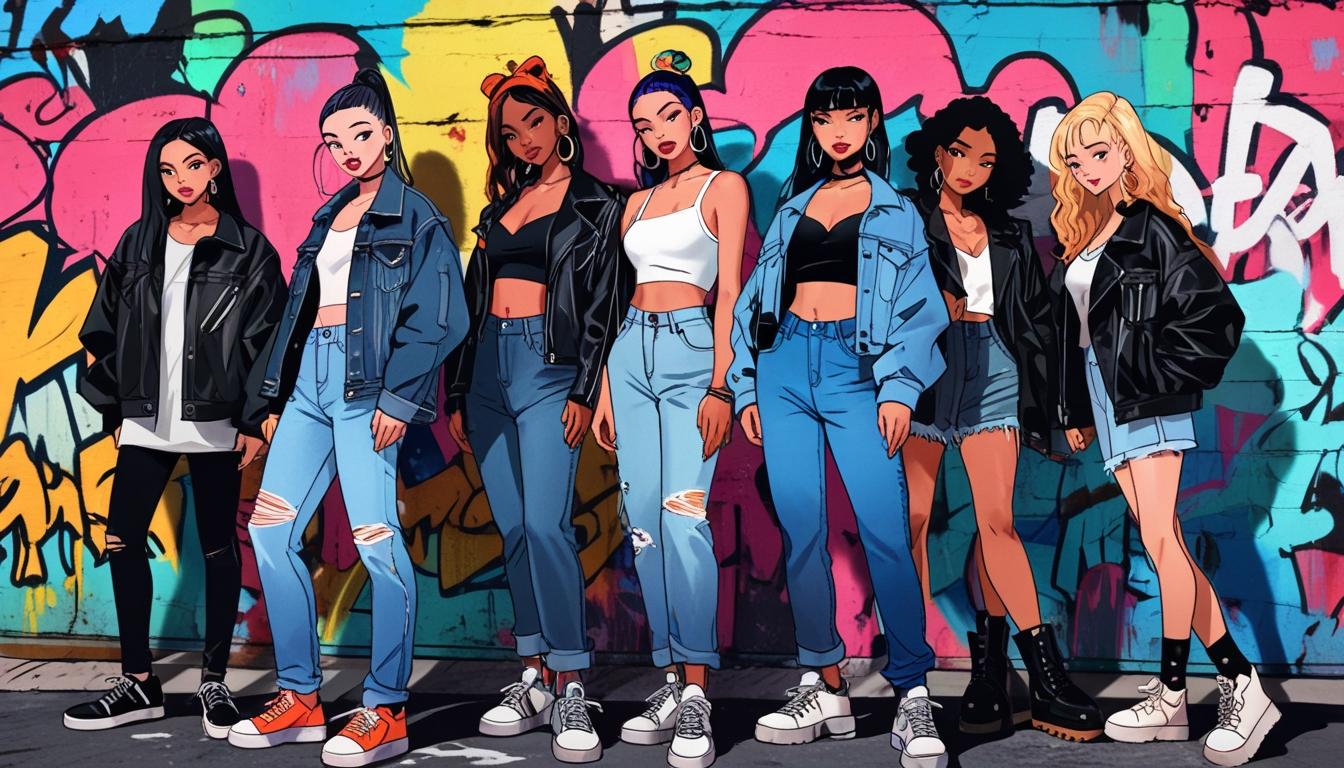
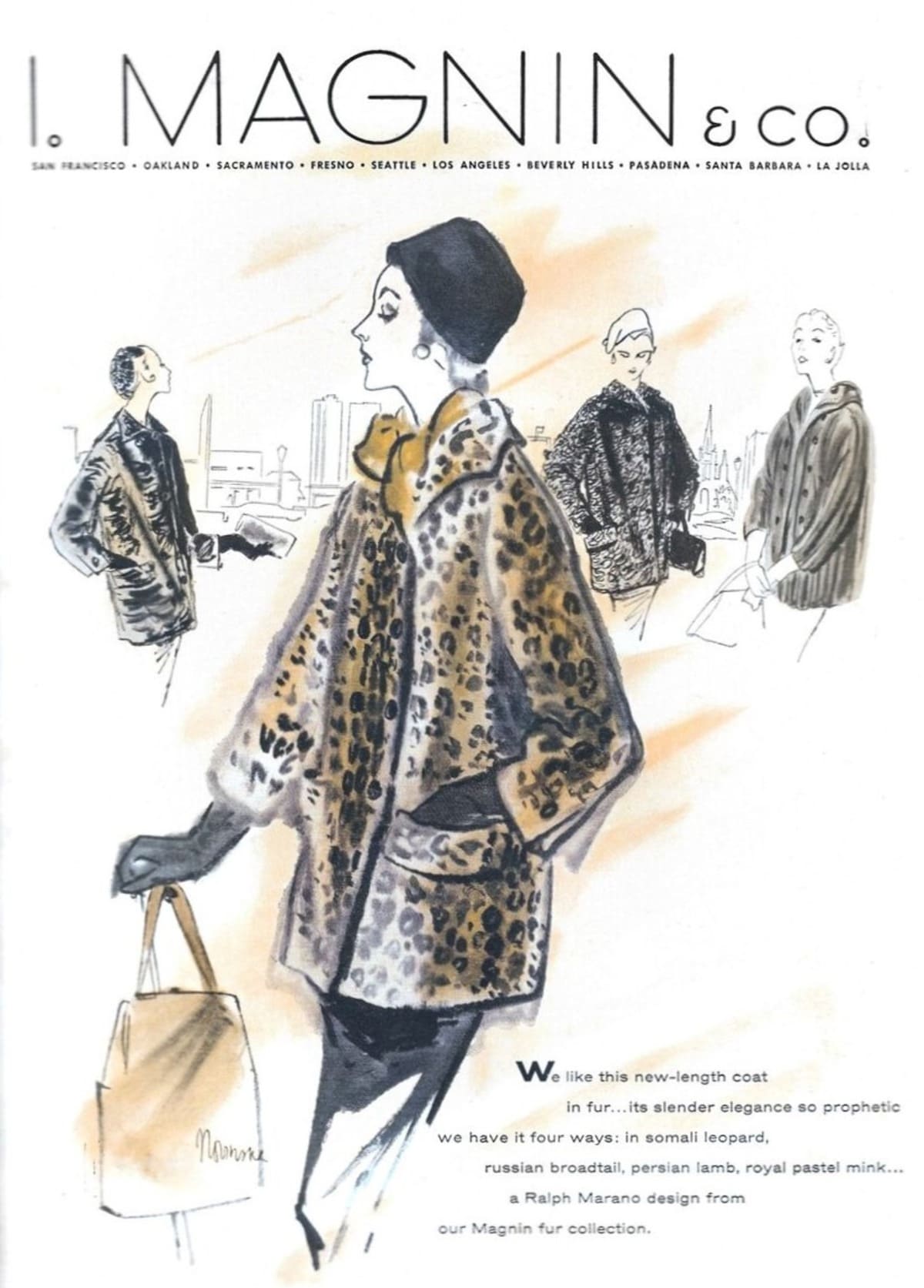
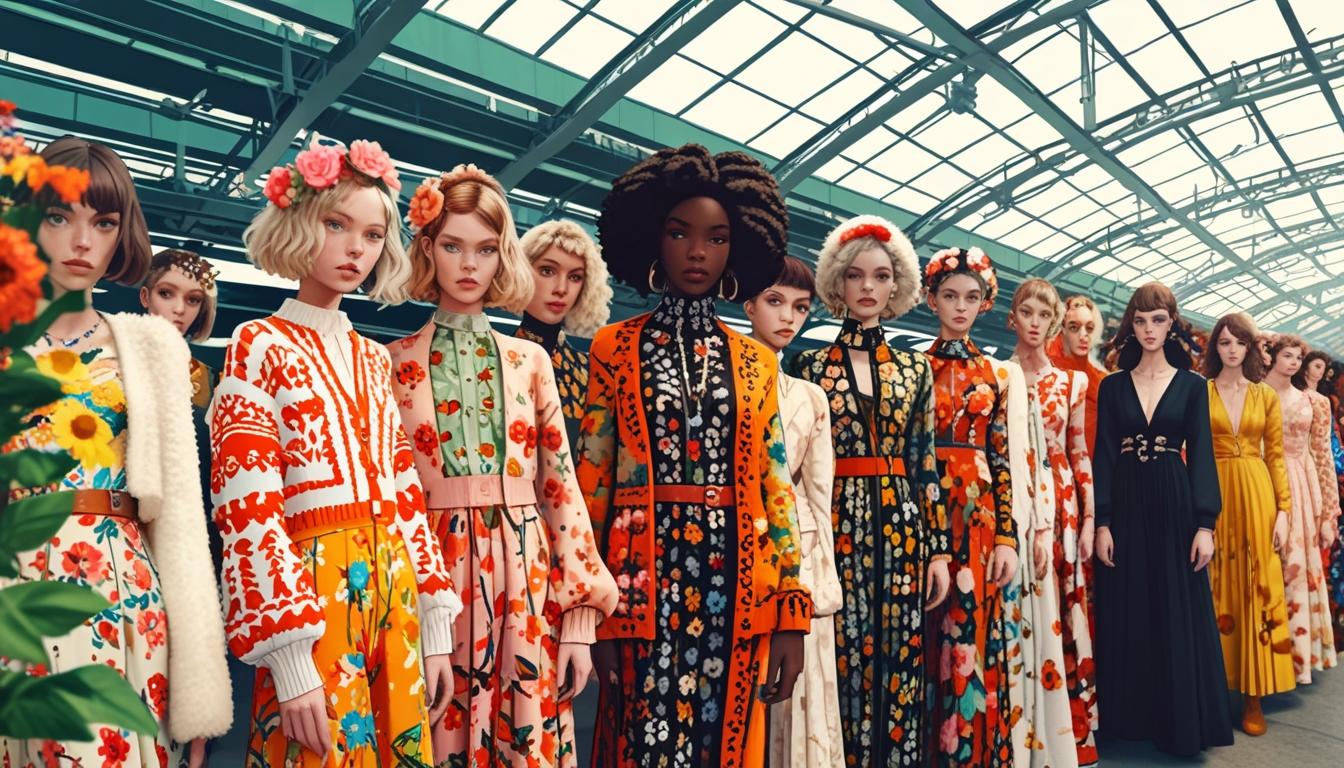
An fascinating dialogue is value comment. I feel that it is best to write more on this topic, it won’t be a taboo subject but typically people are not enough to speak on such topics. To the next. Cheers
Have you ever considered publishing an ebook or guest authoring on other websites? I have a blog based on the same information you discuss and would really like to have you share some stories/information. I know my readers would appreciate your work. If you’re even remotely interested, feel free to send me an email.